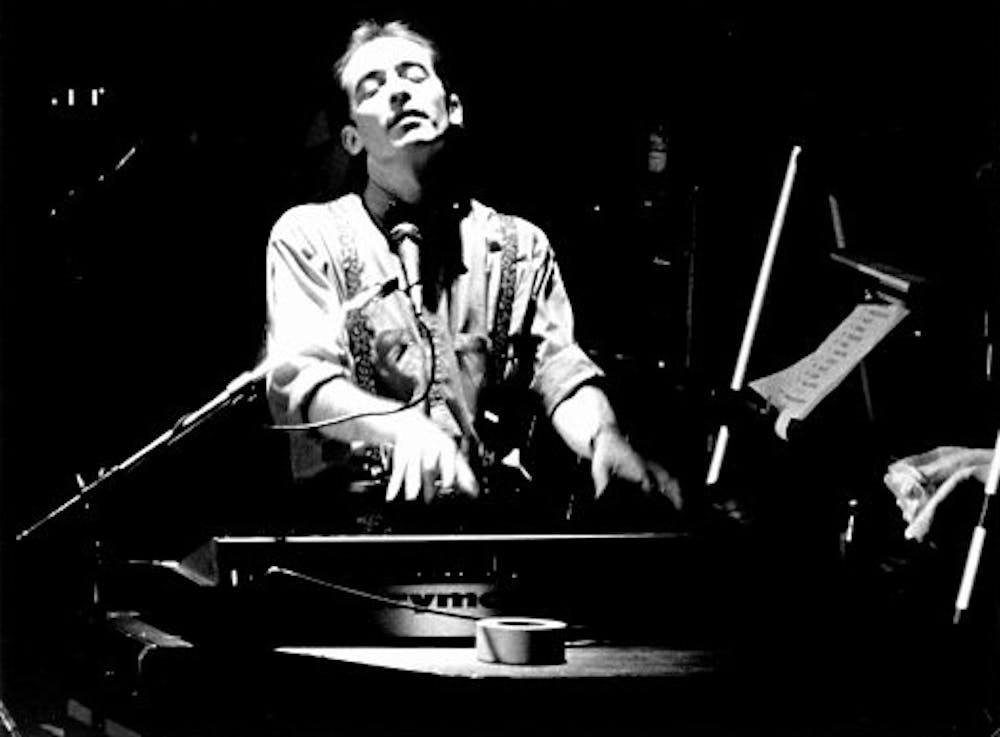By Olivia Alsept-Ellis |
Why is it so exciting to hear about UP graduates making it big? Maybe it soothes our “real world” anxiety, looks good on paper for the Marketing department or maybe we just get a contact-high from their fame. Whatever reason, when famous UP alums return to The Bluff, everyone hears about it.
So why haven’t we heard about Tim Gorman? He’s a graduate of the class of 1974 with a bachelor’s degree in music theory and composition. He signed a recording contract within two years, leading him to work with legends like The Rolling Stones and The Who. The tumbling of events that would spill UP’s Gorman into the heart of the rock ‘n’ roll industry began to snowball from his time spent here on campus.
On The Bluff
Gorman studied music while at UP. His college band, Rivergate, Gorman spurred his interest in the recording process. Delving deeper into his fascination, he immediately found an outlet in Portland: the studio, Recording Associates.
“They paid me $50 to record a demo with Gloria Cutsforth, who was a soprano for the Portland Opera Company and the head voice teacher at UP. At the end of the session, they asked me if I would come back next week. That started my session career,” Gorman said.
Gorman began to show not just interest, but skill. He was working with new studios and nonchalantly networking.
“Senior year, I met a guitarist at a store called Denny’s Music and he was cutting some demos at a studio in Seattle at a place called Kaye-Smith. Led Zepplin had done parts of “Houses of the Holy” and Steve Miller had done “Fly Like an Eagle” and “Book of Dreams” both at that studio,” Gorman said. “I began to do jingle work there and I started getting called for session work.”
The Break
Through this studio in Seattle, Gorman began working side-by-side with well known and up-and-coming artists. He was developing his lyrical work with famous R&B writers and making demo tapes in his downtime. The next step was imminent.
“Through these people in the studio, I sent some of my demo tapes to a New York entertainment attorney, Eric Kronfeld. Bill Lamb, one of the guitarists I was working with, said “You’re never gonna believe this but (Kronfeld) sent our tape to Glyn Johns. He says they want to bring us over to England,” Gorman said.
Glyn Johns is known as the recording engineer of the Beatles’ “Let It Be” and “The White Album,” as well as his work with Led Zepplin, Bob Dylan, The Clash and Band of Horses, among others. Johns was grouping creative studio musicians, like Gorman, in England to create a new project.
“I said, ‘Well, okay,’” Gorman said. “ At worst, I just considered it a free trip to England.”
Gorman was grouped with similar studio musicians. It was an anonymous and suicidal experiment at first.
“We had never played together. Half British and half American. Every day, Glyn Johns is bringing in record company executives to hear us,” Gorman said. “We’re playing in this London, Chelsea area theater and it was so dank and damp and abandoned and there’s water running down the walls but we have electrical cords everywhere. If I stepped in the wrong place I would have lit up like a Christmas tree.”
The pressure was on and, to make the stakes higher, Johns presented Gorman with an electrifying offer.
“He says if you can put up with this for a week, you’ll have a record contract by Friday night,” Gorman said. “Friday night I went into my bedroom to pack, because I figured I was going home Saturday morning back to Portland, and there was a record contract on my bed from A&M records. So that’s how I got signed. And it was a five-year contract. The band was called Lazy Racer.”
The first Lazy Racer album was released in 1976, just two years after his UP graduation. They would release another album, “Formula II,” in 1979.
From this new and powerful platform, Gorman’s music career was beginning to heat up.
As Glyn Johns hated London winters, he took them out to a record studio called Compass Point where Bob Marley and The Whalers also started out. Lazy Racer shared the limited studio space with one other band: The Rolling Stones.
“Their piano player, Ian Stewart, and I had become friends and he kind of took me under his wing,” Gorman said. “He came into at 2 a.m. and said ‘Get up, we’re going down to the studio.’ He says, ‘Play that thing you were playing on the piano today.’ And I look up and at the end of the piano is The Rolling Stones, sitting there at the end having a cocktail.”
However, close quarters alone couldn’t account for Gorman’s success. It was being in the right place at the right time with the right idea.
“And so Mick Jagger says, ‘Hey you wanna come to Paris and do some recording with us?’ I did part of ‘Emotional Rescue’ in the Bahamas and I was there when we finished up on ‘Tattoo You’ in Paris,” Gorman said.
Gorman went on to have a successful career both with his band, and working with The Who, The Rolling Stones, Elton John, Jefferson Starship, The Spinners, The Smithereens and Emmy Lou Harris, among others. Other multimedia projects include James Cameron’s “Titanic,” a restoration of the Popeye’s Series, musical scores for Sims 2, 3, and Spore. He has also produced many independent projects, such as “Celtic Loop” and “Cowboy.”
Back in Portland
Gorman’s radius of activity touches nearly all musical platforms, interwoven with the analog and the digital alike. He’s a primary source for UP students who are looking to the musical industry, if they are interested in composition, programming, or even the business elements. He has spoken on campus on Apple products and the intersections between music and business.
Gorman attributes his variety of skills to the fact that he pursued his music degree at a liberal arts university.
“Everything I learned about music at UP, I’ve been able to apply in my music and in my work. The physics department was really important to me,” Gorman said. “I remember blowing up a champagne glass using frequencies amplified at a certain volume in lab. That acoustics class was probably my primmer for The Who.”
Gorman has moved back to Portland and is currently living in Beaverton with Jackie Culver, a jazz dance teacher here on campus. They dated while students at UP.
“He’ll just play little songs in the morning and it’s always so beautiful. I swear even the birds stop to listen,” Culver said.
After an active career, Gorman is reflective but still ready to take on and create new projects.
Gorman said, “You know the saying about waiting for the news to arrive? Don’t do that, you can make it happen.”
Q & A
What skill helped you the most in the industry?
“Fortunately, I’ve never been a good sleeper. I was not a good napper as kid. Sot this is probably a good profession for me because no one is sleeping. I was always able to get by on two to three hours of sleep, even at UP. Coffee is the mantra and that was it.”
Studio or live on stage: which is better?
“On stage, the sound is so crazy, the audience is so loud and suddenly the guitarist is way down on one side of the stage and the drummer is on the other side. It sounds so uncontrolled. At first it’s a little disconcerting. In the studio, the environment is controlled right down to the air. I started out in the studio, and I love the craft of making recordings, and I thought ‘This is where I want to be.’”
What is some of the best advice you received in the industry?
“At a Rolling Stone session in Paris during ‘Tattoo You,’ I asked Keith Richards about his songwriting process. He had been internally going over a new song and he kept taking bits of it out every time he’d play it. He said, ‘Usually I have too many ideas in one song, so I use a subtractive method and if I can get it down to two chords, I’ve got another satisfaction on my hands’. The simpler you can keep it, the better people respond. It’s not about making it stupid, but it’s about making it clear.
Pete Townsend told me that, for lyrics, your initial idea is going to be the right one. Lyricists had a tendency to want to really work it and change things, but he says that initial idea, that gut reaction, is probably what the song is really about. Because that’s how you felt about it the moment you had an idea. The heart of the song is going to be in that first moment.”
What was the hardest assignment?
“For Spore, they would say ‘Ok, now compose a song for a militant insect planet’ or ‘a planet where everyone is always high.’ One planet was hard because everyone was supposed to be enlightened. I wanted to create that religious tone but it’s a game for all kinds of users and I didn’t want the composition to lean in any particular direction, or to any one religion. So I was using sounds like Gregorian and Tibetan chants, a lot of worldly sounds and instruments.”
For more information and to listen to some of his music, see Tim Gorman’s Reverbnation page.








